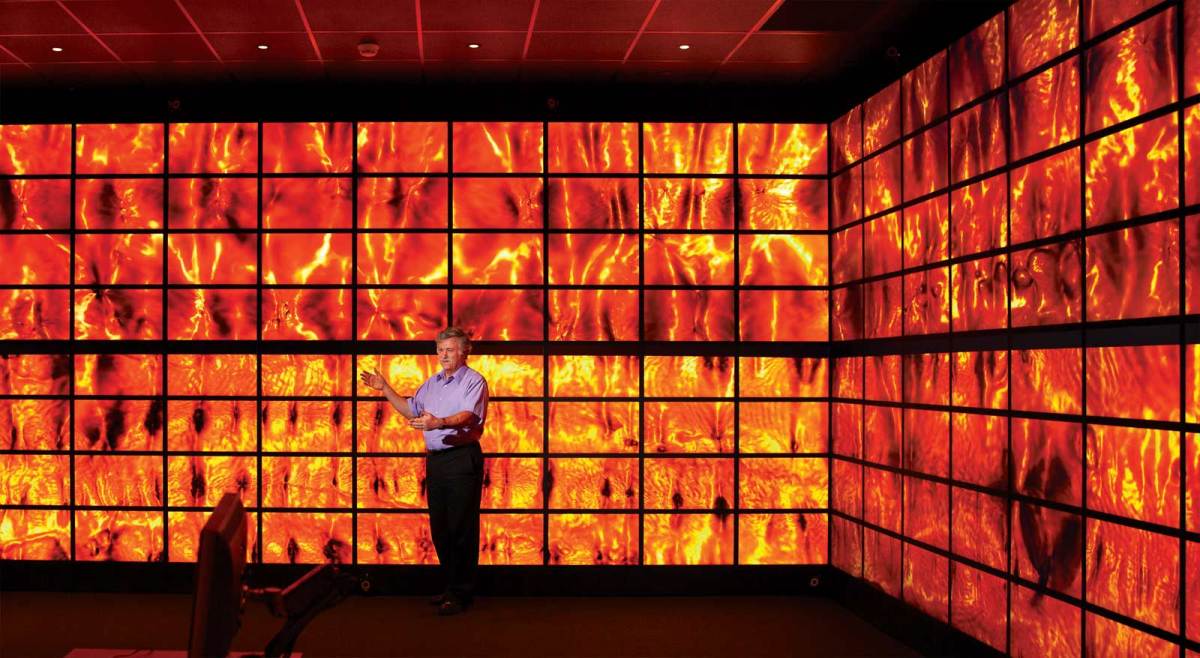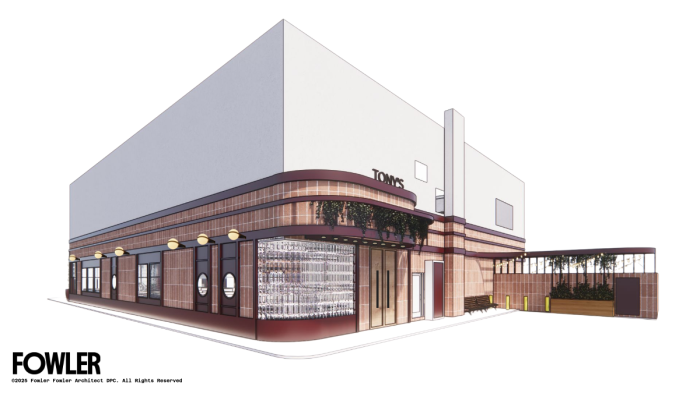On the third floor of a futuristic glass and steel building at Stony Brook University, researchers in a 30-foot by 40-foot room see something midway between a microscope’s image and a movie theater.
The Reality Deck is a space covered with 416 27-inch Samsung screens, each with 4 million pixels, that immerse scientists inside images that make a high-resolution TV look like a Model T Ford. The screens’ 1.5 billion pixels, like living, thinking grains of sand, provide visual information, so scientists can see and understand microscopic mysteries, from medicine to astronomy, from deep inside E. coli molecules to the Milky Way.
“This is the largest in the world,” Project Director Arie Kaufman, who created the Reality Deck, says. “Guinness asked us to give them information. They want to list us as the largest immersive display in the world.”
The room is inside Stony Brook’s Center of Excellence in Wireless and Information Technology, a 100,000-square-foot high-tech facility honeycombed with computer and virtual reality labs.
“There’s probably more data collected in the last two or three years than in the entire history of the human race,” CEWIT Executive Director Dr. Satya Sharma adds. “When you collect that much data, how do you make sense out of it? One way is to visualize that data.”
CEWIT researchers are doing cutting-edge work on everything from virtual reality to machine learning and healthcare to driverless cars, sometimes using these screens on steroids.
“You can see billions of billions of neurons and connections,” Kaufman says of medical images. “You want to see what part of the brain this is coming from.”
Researchers from NASA to neurobiologists can look at medical applications, astronomy, drug design, architecture, transportation, storm surges, Sandy, climate change, clean room applications, and power plant design.
Suddenly, data can become easier to decipher on a larger scale: Solutions buried in matter become clear as writing on a billboard.
“Typically, in a microscope, you don’t see that much. Here we can look at things and we can make sense,” Sharma says. “If you want to kill a molecule, we can look at which atoms you need to work on. It’s a data display device, looking at minute details.”
Almost 7 miles of cable and 3,000 connectors tie together the panels near the building’s air conditioning’s units.
“These are relatively light panels that consume low power and produce low heat,” Kaufman says. “There are so many components. This is really an engineering feat.”
It’s named after the Holodeck, a fictional virtual reality room in the Star Trek series, but this is all science and not fiction.
“We wanted something similar to the Holodeck, a futuristic environment,” Kaufman says. “We have this real thing you can touch and see.”



































